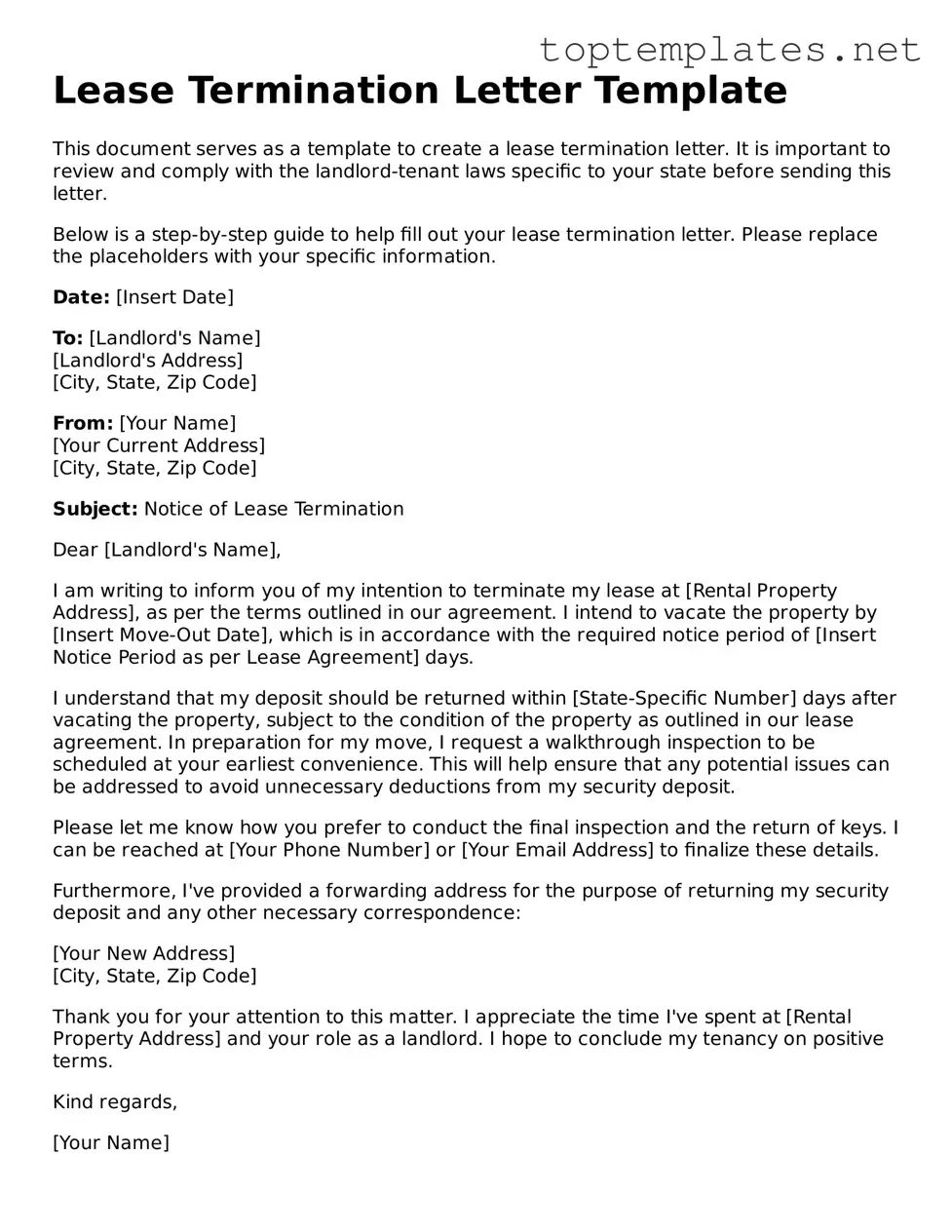Lease Termination Letter Template
This document serves as a template to create a lease termination letter. It is important to review and comply with the landlord-tenant laws specific to your state before sending this letter.
Below is a step-by-step guide to help fill out your lease termination letter. Please replace the placeholders with your specific information.
Date: [Insert Date]
To: [Landlord's Name]
[Landlord's Address]
[City, State, Zip Code]
From: [Your Name]
[Your Current Address]
[City, State, Zip Code]
Subject: Notice of Lease Termination
Dear [Landlord's Name],
I am writing to inform you of my intention to terminate my lease at [Rental Property Address], as per the terms outlined in our agreement. I intend to vacate the property by [Insert Move-Out Date], which is in accordance with the required notice period of [Insert Notice Period as per Lease Agreement] days.
I understand that my deposit should be returned within [State-Specific Number] days after vacating the property, subject to the condition of the property as outlined in our lease agreement. In preparation for my move, I request a walkthrough inspection to be scheduled at your earliest convenience. This will help ensure that any potential issues can be addressed to avoid unnecessary deductions from my security deposit.
Please let me know how you prefer to conduct the final inspection and the return of keys. I can be reached at [Your Phone Number] or [Your Email Address] to finalize these details.
Furthermore, I've provided a forwarding address for the purpose of returning my security deposit and any other necessary correspondence:
[Your New Address]
[City, State, Zip Code]
Thank you for your attention to this matter. I appreciate the time I've spent at [Rental Property Address] and your role as a landlord. I hope to conclude my tenancy on positive terms.
Kind regards,
[Your Name]
Important Notes:
- Review your lease agreement to confirm the notice period and any specific requirements for terminating your lease.
- Keep a copy of this letter and any communication related to your lease termination for your records.
- Consider sending this letter via certified mail or another method that provides a delivery receipt.
This template is provided as a general guide and may need to be customized to meet your specific needs. It's advisable to consult with a legal professional if you have any doubts or require further assistance.
